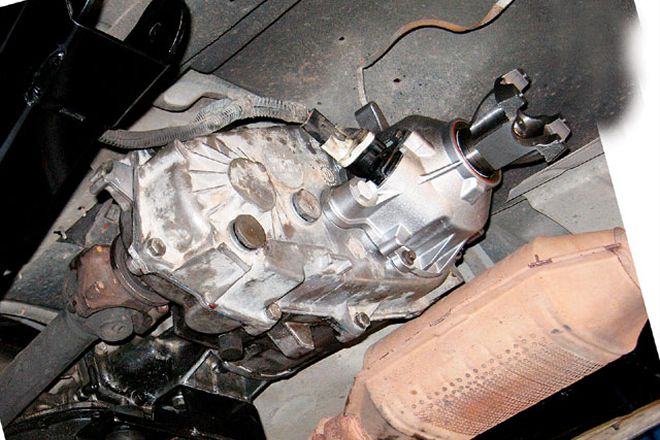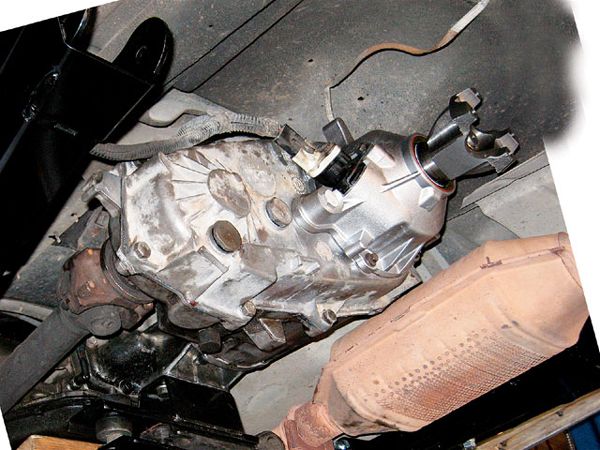

Blowing a rear driveshaft on a stock Jeep is fairly common and can ruin your wheeling weekend. The slip-yoke design on most NP231 transfer cases means that once you remove the driveshaft slip yoke out of the case and try to drive away, all the fluid will come pouring out the seal. In addition, acute rear driveline angles are a limiting factor when lifting short-wheelbase Jeeps. For example, YJ Wranglers' stock rear driveshafts are only about 13.5 inches long, so driveline angles increase quickly as the Jeep is lifted. At approximately 6 inches of lift, short-wheelbase Jeeps require a longer rear driveshaft and possibly a transfer-case drop or CV joint at the transfer-case yoke to make the joints function within their designed operating range.
To cure these ills of a stocker, Jeeps equipped with the NP231 transfer case ('89-'01 XJ Cherokees, '88-'06 Wranglers) can benefit from a slip-yoke eliminator (SYE). This relatively simple modification to the transfer case allows for a longer driveshaft and even a constant-velocity (CV) style driveshaft. The conversion accomplishes several things at once: It increases driveshaft length about 4.5 inches (6.5 inches on TJs), enables the use of a CV joint that is capable of operating at greater angles, and prevents transfer-case fluid loss in the event of rear driveshaft failure (a huge benefit for limping in from the outback in front-wheel-drive). The extra driveshaft length flattens out the driveline angles, which can eliminate the need to lower the transfer case (which would hamper ground clearance) and can minimize driveshaft-joint servicing and replacement.
These kits are available in two prominent forms, including "super short" kits that require electrical speed sensors to be used. However, most Wrangler and XJ Cherokee owners can benefit from a "standard" NP231 SYE kit. One example is the system offered by Superlift as a recommended part of its taller YJ, XJ, and TJ lift kits. Components include a high-quality mainshaft, a new aluminum tailhousing, a few snap rings, and a new yoke-everything except a longer driveshaft (length varies depending on application and lift height).
Installation requires partially disassembling the transfer case. Luckily, NP231s are straightforward, and the only somewhat-specialized tool required is a pair of sturdy snap-ring pliers. Although the transfer case doesn't have to be removed from the vehicle, the process is a little easier on a bench. Check out how simple it is for even a shade-tree mechanic to install a slip-yoke eliminator.





 PhotosView Slideshow
PhotosView Slideshow







